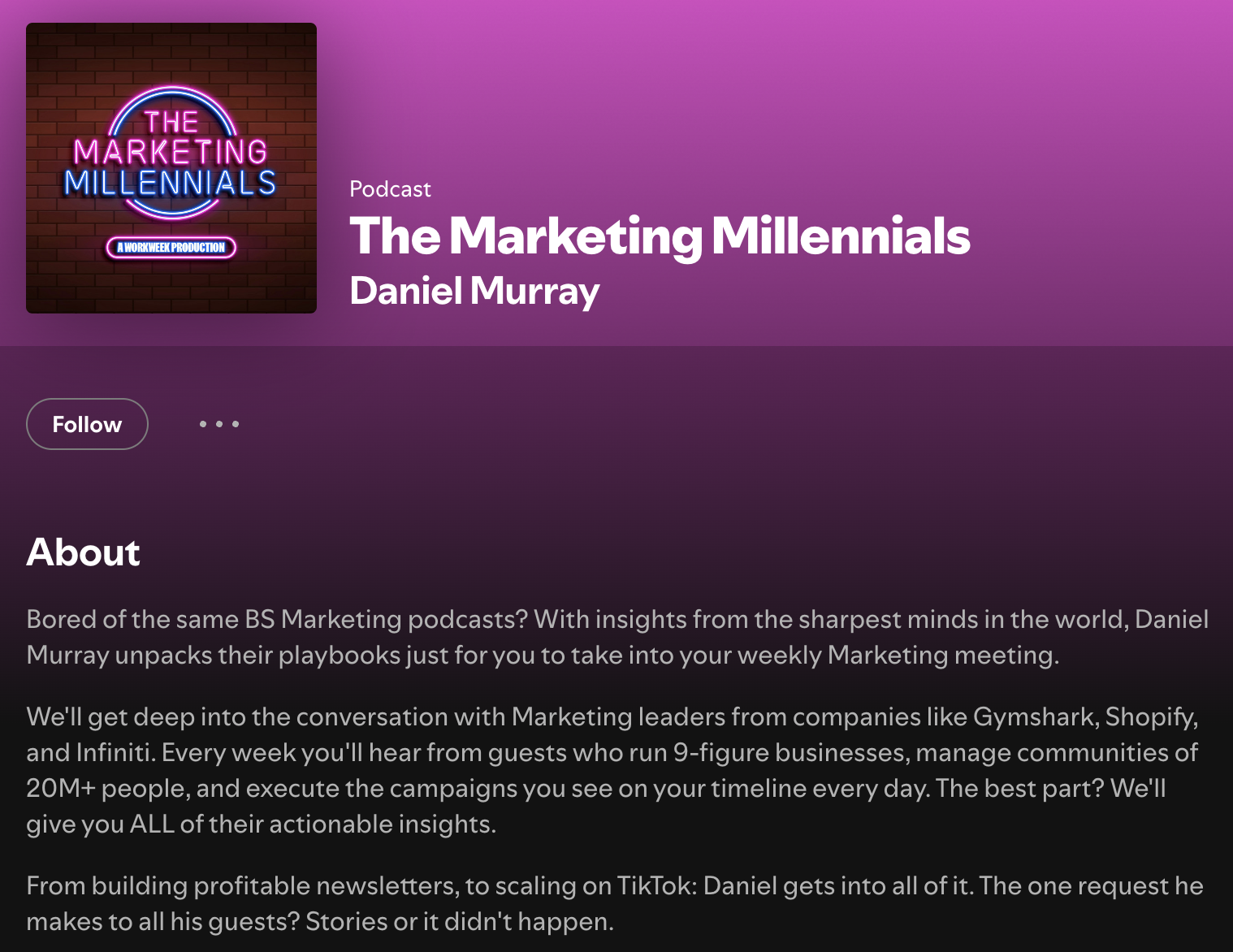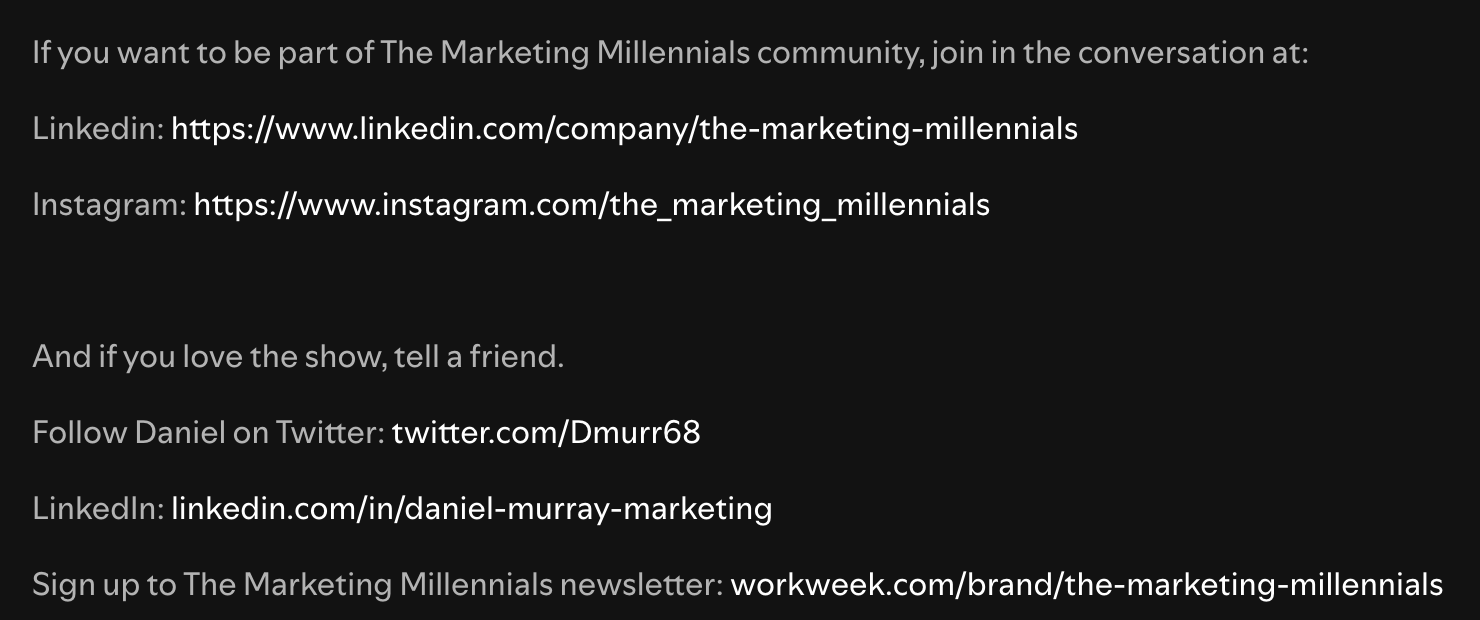8 Tips to Spotlight Your Spotify Podcast
Creating a well-crafted Spotify podcast requires serious effort. Making it stand out to listeners is critical. In the digital music & podcast world, optimizing podcasts through SEO can dramatically increase visibility and engagement. In this article, I'll share eight tips to make your podcast stand out.
Why SEO Matters in the Spotify Ecosystem
Search Engine Optimization (SEO) is not just for websites. SEO for Spotify podcasts helps the platform show your content to the right audience.
Benefits of SEO for Producers and Publishers
- Increased Visibility: The right SEO techniques can move your podcast higher in search results.
- Targeted Audience: You can attract listeners who are specifically interested in your carefully crafted podcast.
- Enhanced Engagement: More visibility means more engagement, sharing, and feedback.
1. Creating the Perfect Podcast Headline
The title of the podcast is like the headline of a newspaper; it should immediately grab attention and convey what it is essentially saying.
Tips for SEO-Friendly Header
- Be Specific, Not General: You should choose titles that clearly express the theme and topic of your podcast. For example, you can use a more specific and descriptive title like “Latest Trends and Strategies in Digital Marketing” instead of “Marketing Podcast”.
- Use Relevant Keywords: You should include keywords in your title with listeners' possible searches in mind. “Top SEO Tactics in 2024” is more discoverable than ‘SEO Tips’.
- Reflect on the Mood and Content: You should create titles that reflect the topic and style of your podcast. For example, “Inspiring Entrepreneurship Stories” or “Daily Meditation: Techniques to Reduce Stress” will appeal to a specific audience.
- Keep it Short: Make sure the full title appears in search results. Do not exceed 60-70 characters.

- Use Popular and Related Terms: If your podcast focuses on a current topic or popular trend, you can attract more listeners by emphasizing it in the title. For example, “The Future with Artificial Intelligence: What to Expect in 2024” will attract listeners who are interested in the topic and follow the popular trend.
- Avoid Clickbait: Misleading titles can bring clicks to your podcast, but to retain listeners in the long run, your title needs to accurately reflect the content.
Effective Podcast Headline Examples
“Introduction to the World of Coding: Beginner Programming Tips”
“Marketing Stories: Successful Strategies in the Digital World”
“Creative Entrepreneurs: Inspiring Success Stories”
“Stress Management: Meditation Techniques in Everyday Life”
“Women Leaders in Business: Experiences and Advice”
“Futurism Talks: On Future Technologies”
2. Mastering Podcast Descriptions
Descriptions are one of the most important areas where you can use SEO to get your podcast discovered. It both gives context to your content and helps you attract potential listeners with the right keywords.
How to Optimize Your Podcast Description
- Keyword Integration: You can be found more easily in searches by including keywords related to the topic of your podcast in your description. For example, “In this podcast, we bring healthy living and nutrition tips to our listeners.”
- Be Short and Informative: Tell listeners what your podcast is about in a few short, punchy sentences. For example, “Discover the latest trends and success stories in the world of entrepreneurship.

- Include Important Guests: Host guests who are experts on the topic of your podcast. You can attract their audience by mentioning the experts you host. For example, “A conversation with X, one of the leading names in digital marketing, on the future of digital marketing and artificial intelligence.”

- Use Emojis in Moderation: Emojis can be attention-grabbing, but overuse can undermine a professional appearance. A few emojis to reinforce your message will suffice.
- Update Regularly: Keep the description of your podcast up to date, especially as you add new episodes or change topics.
- Take Action: Invite your audience to interact. For example, “Don't forget to subscribe for weekly marketing tips!”

3. Creating Eye-Catching Cover Images
The cover image of your podcast is your billboard. Therefore, it should be visually impressive, relevant, and professional-looking.
Best Practices for Podcast Cover Art
- Maintain Brand Consistency: Use a consistent style or theme on your covers.
- Use High-Quality Images: Make sure your cover art looks sharp on both mobile and desktop screens.
- Reflect on the Mood of the Podcast: Use colors and images that match the theme of the podcast.
- Integrate Text Smartly: If you are adding text, make sure it is readable in small sizes.
- Pay Attention to Copyright: Always use images for which you own the rights.
- A/B Test Your Covers: Try different designs and see which ones attract more followers.
Tools to Create Cover Images for Podcasts
- Canva: Offers templates for Spotify podcast covers.
- Adobe Spark: A good option for professional-looking designs.
- Photopea: A free, web-based alternative to Photoshop.
- Midjourney or DALL-E: For unique, AI-generated creative visuals.

Generated via Midjourney / Edited in Canva
Prompt: A sleek, modern podcast cover image for 'TechTalk Marketing'. Dark background with electric blue and neon green accents. Prominent bold futuristic font for the title. Incorporate subtle digital marketing icons like analytics charts, social media symbols, and SEO graphics. Feature a high-tech microphone as the central element. Clean, professional design appealing to tech-savvy marketers. Square format optimized for podcast platforms. --ar 1:1 --v 6.1 --q 2
4. Promoting Podcasting Beyond Spotify
Creating an engaging podcast is only half the battle. Effective promotion to get it in front of the right audience is just as important as the content.
Effective Promotion Strategies
- Use Reddit: Share your podcast on relevant subreddits and be part of communities. It is especially useful to participate in discussions on the topic.
- Instagram Stories: Use the 'Scroll Up' feature on Instagram stories to announce new episodes or add a link to your podcast in your bio.
- X (Twitter) Engagement: Tweet using hashtags relevant to the topic of your podcast and engage with relevant communities. You can increase visibility by using important podcast hashtags.
- Facebook Groups: Join groups relevant to the theme of your podcast and share new episodes to expand your audience.
- Collaborate with Influencers: You can reach a wider audience by collaborating with bloggers, YouTubers, or social media influencers related to the podcast.
- Cross-Promote: Collaborate with other podcasters. You can be a guest on their podcast or have them promote your podcast.
- Create Podcast-Related Content: You can reach new listeners by creating blog posts, YouTube videos, or social media content about the topic of your podcast.
5. Targeted Advertising Strategy for Podcasts
Consider setting aside a small budget for targeted advertising on social platforms.
- Define Your Audience: Identify people who are interested in the topic of your podcast and target your ads according to their interests. For example, if you're making a podcast about business, you can target professional networks.
- Create Compelling Ad Copy: Clearly articulate what makes your podcast unique and what problems it solves. For example, “Join us for our weekly podcast series filled with inspiring entrepreneurial stories.”
- Use Eye-Catching Visuals: Use your podcast cover image or a custom image for each episode to grab attention visually.
- Monitor and Optimize: Continuously track ad performance, analyze which types of ads work best, and adjust accordingly to increase the efficiency of your budget.
6. Promote Interaction and Build a Community
Interaction fosters organic growth. Build a sense of community around your podcast.
Ask for Suggestions: Make your listeners a part of your podcast by asking them for guest or topic suggestions. This will also help you understand their interests better.
Follow Social Media Trends: Engage with popular social media themes. For example, encourage listener engagement by organizing weekly discussion threads or polls.
Behind the Scenes Shares: Share content about the process of making your podcast. Connect with listeners by showing your inspirations, guest selections, or recording process.
Listener Collaboration: Strengthen the sense of community by having conversations around episodes where you answer questions from your listeners or stories they submit.
Respond to Comments: Actively respond to feedback on Spotify, Apple Podcasts, or social media platforms. This helps you build a strong connection with your listeners.
Create Side Podcast Series: Diversify content and reach new audiences by launching spin-off podcast series on popular themes or subtopics you cover on your main podcast.
7. Performance Monitoring and Analysis
Strengthen your strategy by accurately analyzing your podcast's performance.
Key Metrics to Track
Follower Growth: Track the speed at which you gain new followers.
Listen Counts: Track the total number of listens to your podcast and the number of listens for each episode.
Save Rate: Observe how often listeners record your podcast or specific episodes.
Discovery Rate: Analyze whether listeners found you through searches or recommendations.
Listener Demographics: Tailor your content more effectively to your audience demographics.
Tools for Deeper Insights
- Spotify for Artists: Provides valuable data on podcast additions.
- Chartmetric: Provides in-depth analytics on podcast performance and track success.
- Soundcharts: Comprehensive music analytics, including podcast tracking.
- Playlist Push: Provides tools for both artist submissions and podcasters.
8. Keeping Your Podcast Current and Relevant
A stagnant podcast is a dead podcast. Keep your podcast updated to retain and grow your listeners.
- Create a Regular Update Schedule: Consistency is critical for listener engagement. Make sure to add new content at regular intervals.
- Create a Content Cycle: Put old episodes on the back burner or remove them as you add new ones. This ensures that listeners will always find fresh content.
- Follow Trends: Follow popular topics using Spotify playlists and other sources. Integrate emerging trends into your content.
- Make Seasonal Updates: Increase listener engagement by updating your podcast around seasonal themes, holidays, or special events.
- Announce Your Updates: Inform your followers about new content and encourage them to listen again. Actively use social media and other platforms.
Outcome
Catchy titles, effective descriptions, beautiful cover art, and regular promotion are essential to creating a successful Spotify podcast. Constantly monitor your performance based on listener feedback and update your strategy accordingly. Be patient; over time, your podcast will find its audience and grow.
This content was created by Nursena Küçüksoy, Marketing Specialist at Zeo.















